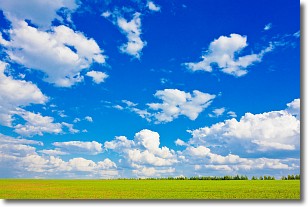Weather Alert in Michigan
Air Quality Alert issued June 16 at 12:33PM EDT by NWS Northern Indiana
AREAS AFFECTED: Cass; Northern Berrien; Southern Berrien
DESCRIPTION: The Michigan Department of Environment, Great Lakes, and Energy (EGLE) has declared an Air Quality Advisory for June 17, for elevated levels of ozone in several western lake shore counties. Pollutants within those areas are expected to be in the Unhealthy for Sensitive Groups (USG, Orange AQI) range. The Air Quality Advisory is in effect for the following counties in southwest Michigan... Berrien and Cass Although smoke advisories are no longer an issue for the meantime, we are getting into the peak season for ozone development. This will be the case for Tuesday, as all signs point towards the likely development of elevated ozone along several lake shore counties. Elements such as wind direction, temperature, dewpoint and upper air conditions all point towards the likelihood that could see ozone concentration in the USG range. Cloud cover is uncertain during the peak heating hours, but enough sun will likely trigger the photochemical reactions necessary to generate ozone. It is recommended that, when possible, you avoid strenuous outdoor activities, especially those with respiratory diseases such as asthma. People and businesses are urged to avoid activities which lead to ozone formation. These activities include: * refueling vehicles or topping off when refueling; * using gasoline powered lawn equipment; * using charcoal lighter fluid. Positive activities include: * driving less; * telecommuting; * walking or bike riding; * delaying or combining errands; * using water-based paints. For up-to-date air quality data for Michigan visit the MiAir site: https://air-egle.hub.arcgis.com/ For up-to-date air quality data nationally visit EPA's Air Now site: https://www.airnow.gov/
INSTRUCTION: N/A
Want more detail? Get the Complete 7 Day and Night Detailed Forecast!
Current U.S. National Radar--Current
The Current National Weather Radar is shown below with a UTC Time (subtract 5 hours from UTC to get Eastern Time).

National Weather Forecast--Current
The Current National Weather Forecast and National Weather Map are shown below.

National Weather Forecast for Tomorrow
Tomorrow National Weather Forecast and Tomorrow National Weather Map are show below.

North America Water Vapor (Moisture)
This map shows recent moisture content over North America. Bright and colored areas show high moisture (ie, clouds); brown indicates very little moisture present; black indicates no moisture.

Weather Topic: What are Contrails?
Home - Education - Cloud Types - Contrails
 Next Topic: Cumulonimbus Clouds
Next Topic: Cumulonimbus Clouds
A contrail is an artificial cloud, created by the passing of an
aircraft.
Contrails form because water vapor in the exhaust of aircraft engines is suspended
in the air under certain temperatures and humidity conditions. These contrails
are called exhaust contrails.
Another type of contrail can form due to a temporary reduction in air pressure
moving over the plane's surface, causing condensation.
These are called aerodynamic contrails.
When you can see your breath on a cold day, it is also because of condensation.
The reason contrails last longer than the condensation from your breath is
because the water in contrails freezes into ice particles.
Next Topic: Cumulonimbus Clouds
Weather Topic: What are Cumulus Clouds?
Home - Education - Cloud Types - Cumulus Clouds
 Next Topic: Drizzle
Next Topic: Drizzle
Cumulus clouds are fluffy and textured with rounded tops, and
may have flat bottoms. The border of a cumulus cloud
is clearly defined, and can have the appearance of cotton or cauliflower.
Cumulus clouds form at low altitudes (rarely above 2 km) but can grow very tall,
becoming cumulus congestus and possibly the even taller cumulonimbus clouds.
When cumulus clouds become taller, they have a greater chance of producing precipitation.
Next Topic: Drizzle
Current conditions powered by WeatherAPI.com




